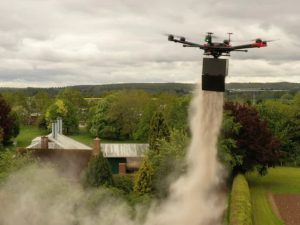How Scattering Ashes Can Go Wrong: What You Need to Know
Scattering ashes is a meaningful and symbolic way to honor a loved one who has passed. This practice allows the family to return their loved one’s remains to nature in a place that held special significance. However, despite the good intentions behind it, scattering ashes can sometimes go wrong, leading to unintended consequences that might mar the memory of the occasion. This article explores potential pitfalls and offers tips on how to avoid them, ensuring that the ceremony is as respectful and smooth as possible.
1. Legal Considerations: Know the Law
Before planning to scatter ashes, it’s crucial to understand the legal regulations in your area. Many regions have specific rules regarding where and how ashes can be scattered. Scattering ashes on private property, for example, often requires the landowner’s permission, and certain public spaces may have restrictions. Failing to comply with these regulations can result in fines or legal complications, which can overshadow the solemnity of the occasion.
2. Environmental Concerns: Avoiding Harm to Nature
While it may seem natural to scatter ashes in a beautiful outdoor setting, certain locations may be environmentally sensitive. Ashes can alter the pH of soil and water, potentially harming plant life or aquatic ecosystems. For instance, scattering ashes near a river or lake might seem serene, but if the water body is a source of drinking water or home to endangered species, it could cause unintended environmental damage.
3. Weather Conditions: Wind and Rain Hazards
Weather plays a significant role in scattering ashes. A sudden gust of wind can carry ashes in an unintended direction, potentially toward people, property, or into areas that weren’t meant to be affected. Similarly, rain can cause the ashes to clump together, making it difficult to scatter them evenly. Checking the weather forecast and choosing a calm, dry day can help mitigate these risks.
4. Unintended Dispersal: Public and Private Spaces
Scattering ashes in public spaces like parks or beaches can be complicated by the presence of other people. Without proper planning, ashes may unintentionally reach bystanders, leading to discomfort or even complaints. In some cases, the ashes may drift onto private property, leading to disputes or requiring cleanup efforts. To avoid these issues, it’s advisable to choose a secluded location or time when the area is less populated.
5. Ceremonial Mishaps: Ensuring Dignity and Respect
The act of scattering ashes is often accompanied by a ceremony. However, if the scattering is not done carefully, it can result in mishaps that diminish the intended respect and dignity. For instance, using a container that is difficult to handle, or not having a clear plan for the dispersal, can lead to awkward moments or accidents during the ceremony. It’s essential to rehearse the process, ensure everyone involved understands their role, and use an appropriate vessel designed for scattering ashes.
6. Emotional Considerations: Impact on Grieving Family Members
The process of scattering ashes can be an emotional experience, and if things go wrong, it can leave a lasting negative impact on grieving family members. Mishaps during the ceremony can lead to feelings of guilt or regret, adding to the emotional burden of loss. To help alleviate this, it’s important to prepare everyone involved for what to expect and to approach the ceremony with flexibility and patience, allowing time to adjust to any unforeseen circumstances.
How to Ensure a Smooth and Respectful Ceremony
To minimize the risks associated with scattering ashes, thorough planning is key. Here are some tips to help ensure the process goes smoothly:
- Research Local Laws: Before finalizing your plans, research the regulations in your area or consult with a funeral director who is familiar with local practices.
- Choose the Right Location: Select a location that is meaningful, but also consider its environmental impact and the potential for interaction with other people.
- Check the Weather: Aim to conduct the ceremony on a day with calm weather to avoid issues with wind or rain.
- Use Appropriate Equipment: Consider using a scattering tube or similar container designed to make the process easier and more controlled.
- Prepare Participants: Make sure everyone involved understands the plan and their role in the ceremony to avoid confusion or accidents.
- Be Mindful of Emotions: Recognize that this is an emotional event and be prepared to handle any feelings that may arise.
Conclusion
Scattering ashes is a deeply personal way to honor a loved one, but it requires careful planning to ensure the ceremony is respectful and meaningful. By understanding the potential pitfalls and taking steps to avoid them, you can create a beautiful and memorable tribute to the person you’ve lost. Remember, the goal is to honor their memory in a way that brings peace and closure to those left behind


